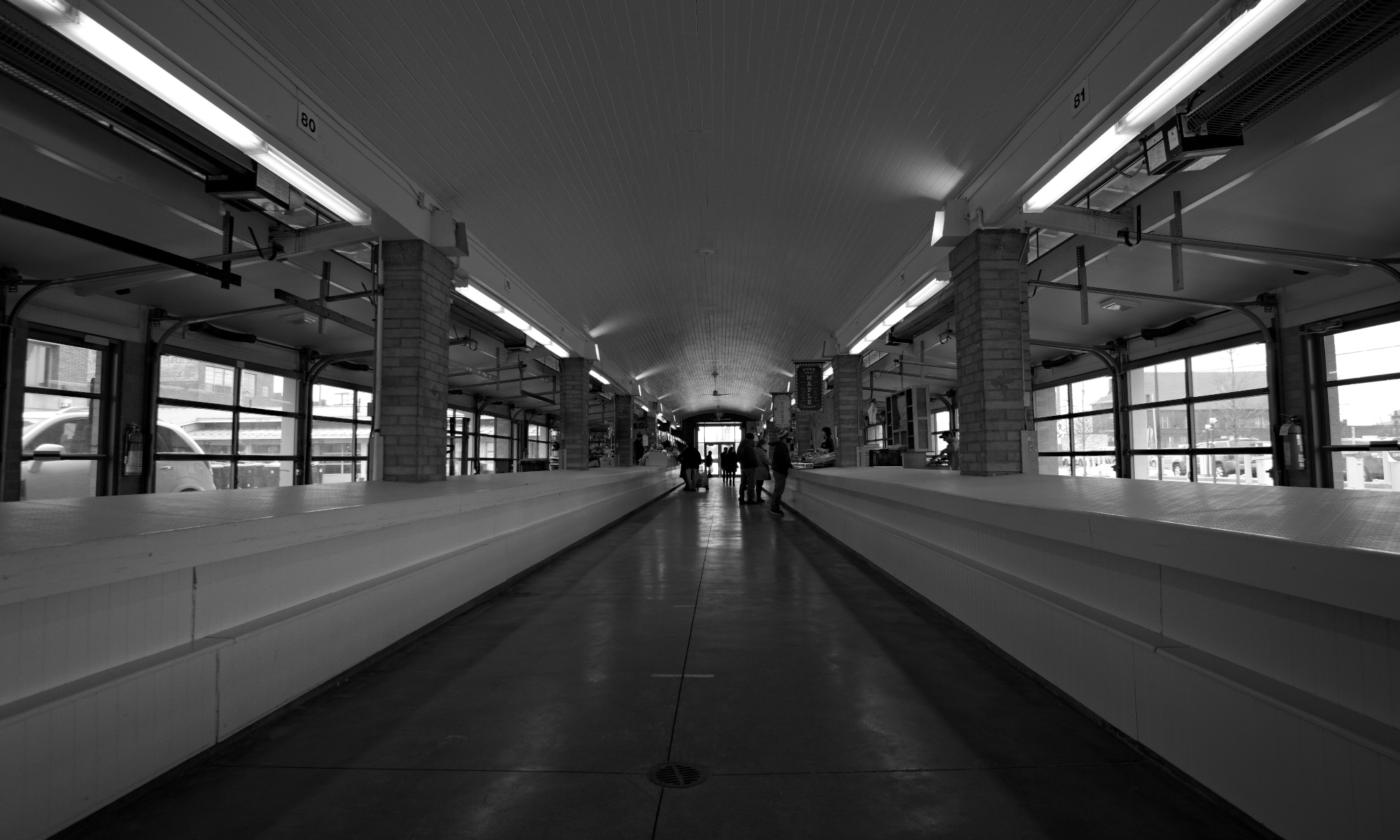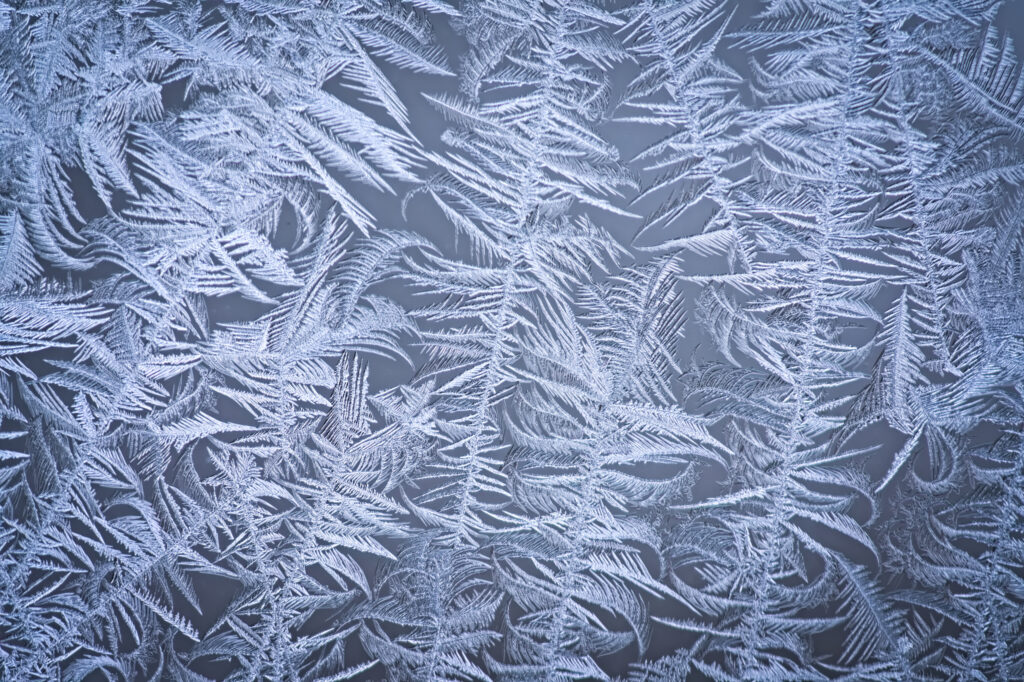What Are Ice Crystals on Glass?
When temperatures drop below freezing, water vapor in the air can turn directly into solid ice without passing through the liquid phase—a process known as deposition. When this happens on surfaces like glass windows, it creates the mesmerizing, frosty patterns we often admire. These ice crystals appear in elaborate shapes, from fern-like patterns to feathery, crystalline formations. Photographing ice crystals can be quite the challenge. Luckily we have a few tips below to help.
The Science Behind Frost Formation
- Temperature Difference:
Ice crystals typically appear when warm, moisture-filled air (like the air inside a cozy home) comes into contact with a cold surface (the outdoor-facing side of a window). The significant temperature difference causes water vapor in the warm air to rapidly cool and transform into ice. - Dew Point and Humidity:
The dew point is the temperature at which water vapor in the air begins to condense into liquid water (or in freezing conditions, sublimate into ice). If your window or glass surface is below this dew point, it allows moisture to deposit as frost. - Surface Imperfections:
Tiny imperfections on the glass—such as scratches, dust, or even subtle differences in temperature across the surface—can serve as nucleation sites for ice to form. As the crystals grow, they spread outward in unique patterns, creating the iconic designs we see. - Air Movement:
Still air promotes the formation of more intricate frost crystals because it allows water vapor to settle evenly. In contrast, strong drafts or moving air can disrupt the formation process, leading to smaller or less noticeable frost patterns.
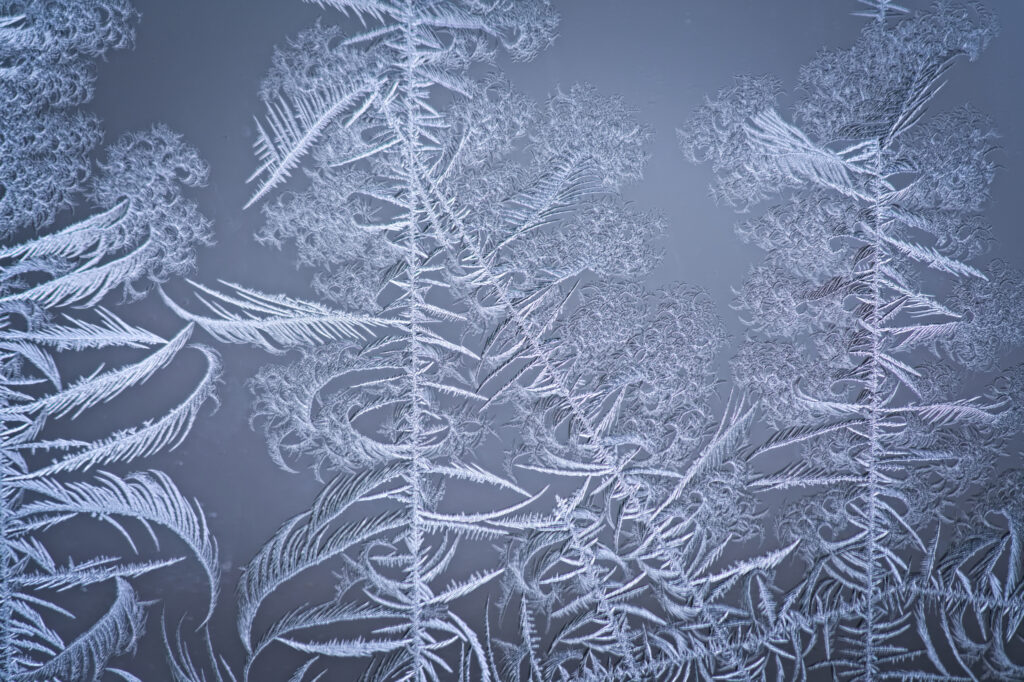
Why Ice Crystals on Glass Are So Beautiful
- Symmetry and Repetition: Frost crystals often grow following symmetrical patterns, giving them a delicate, geometric look.
- Natural Lighting: When sunlight or ambient light catches these crystals, it highlights their translucent and sparkling nature, creating a soft glow.
- Unique Each Time: Just like snowflakes, no two ice crystal formations are identical. The combination of temperature, humidity, and surface texture results in one-of-a-kind patterns every time.
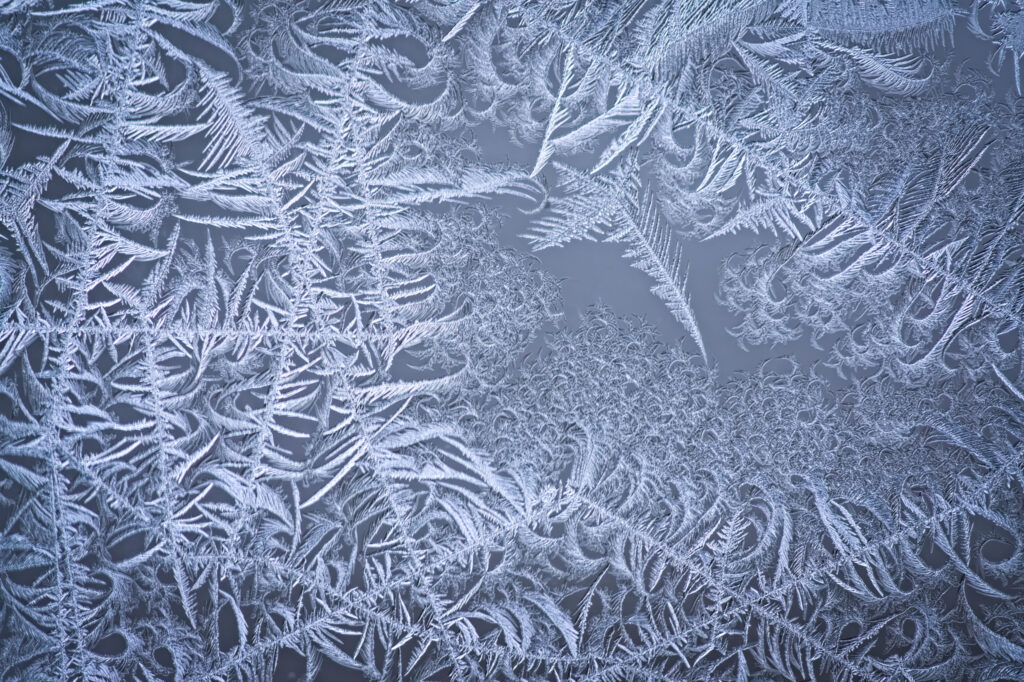
How to Capture Stunning Photos of Ice Crystals
- Use the Right Equipment:
- Macro Lens: A macro lens or close-up filters will help you capture the fine details of ice crystals.
- Tripod: Stabilize your camera to maintain sharpness, especially when using slower shutter speeds.
- Lighting Techniques:
- Natural Light: Position the camera so sunlight or indirect natural light illuminates the crystals from behind or the side. This backlighting can highlight the intricate patterns.
- Reflectors: A small reflector (even a white sheet of paper) can bounce additional light onto the subject for more clarity.
- Choose the Right Settings:
- Aperture (f-stop): A smaller aperture (like f/8 to f/16) increases the depth of field to capture the full detail of the crystal.
- ISO: Keep your ISO as low as possible (e.g., ISO 100–200) to avoid noise and maintain image clarity.
- Shutter Speed: Adjust according to your aperture and lighting conditions—use a faster shutter speed if you’re handholding or if there is wind, or a slower shutter speed with a tripod in calmer conditions.
- Timing Is Key:
- Early mornings or late evenings are often the best times to find fresh frost on windows. Monitor weather conditions for cold, clear nights that result in crisp mornings.
Hire a Professional photographer with macro experience
Macro photography is very challenging. Requiring complex lighting and precision equipment. If you have a project that requires precise images in complex situations or at miniature levels contact us today to learn about solutions we have to get the media you need!
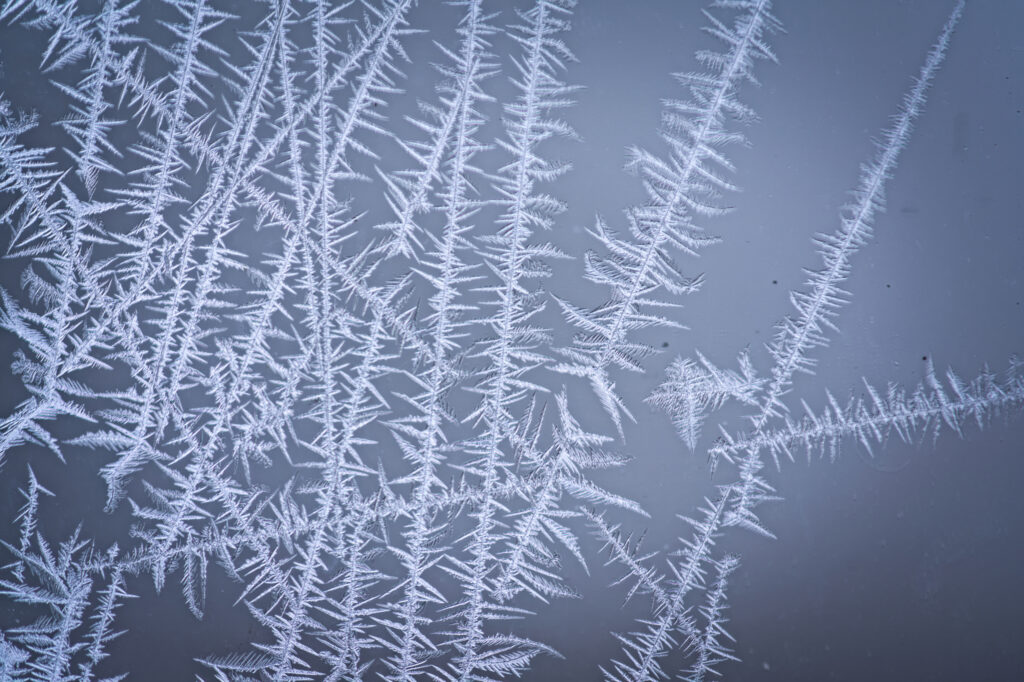
Want to learn more?
Inspiration for these shots come from the one and only Ice Man himself. To read more, check out this great article on Artnet.
